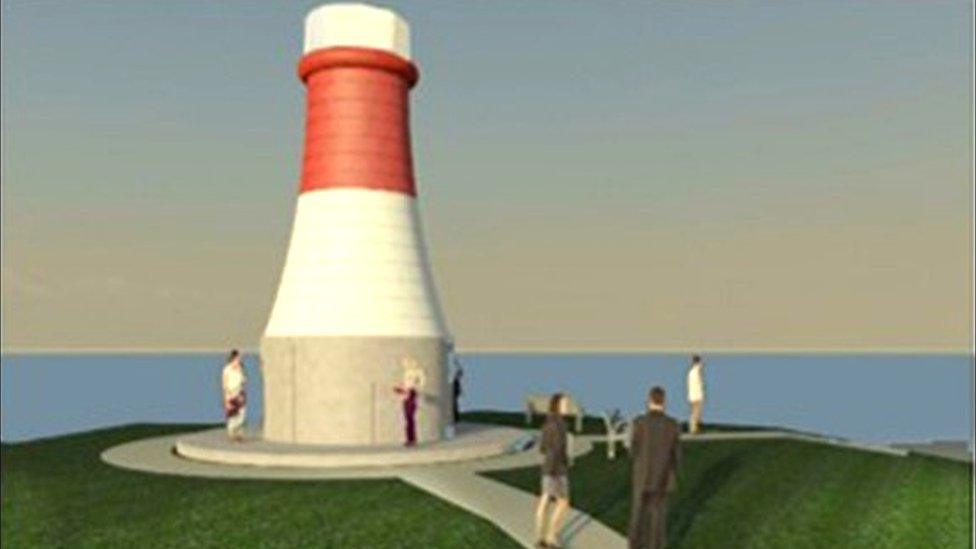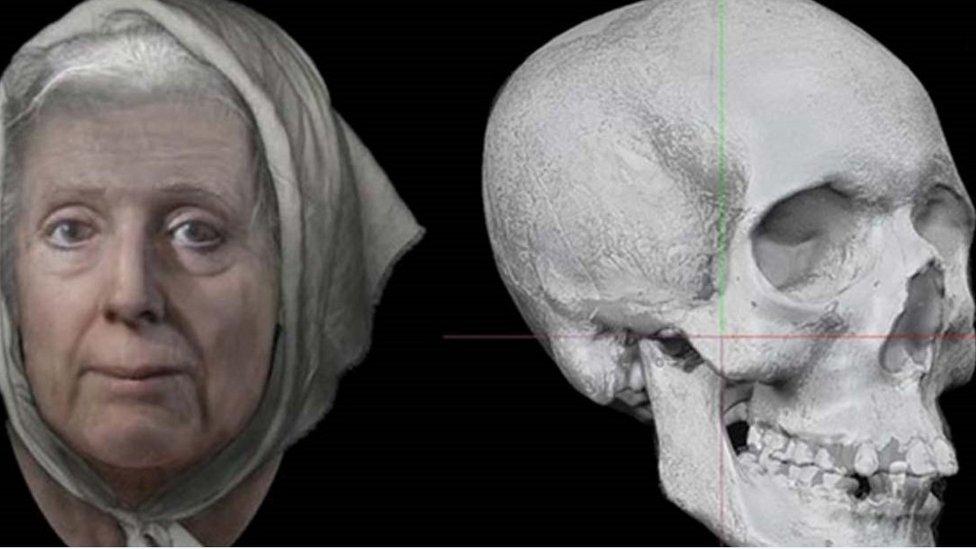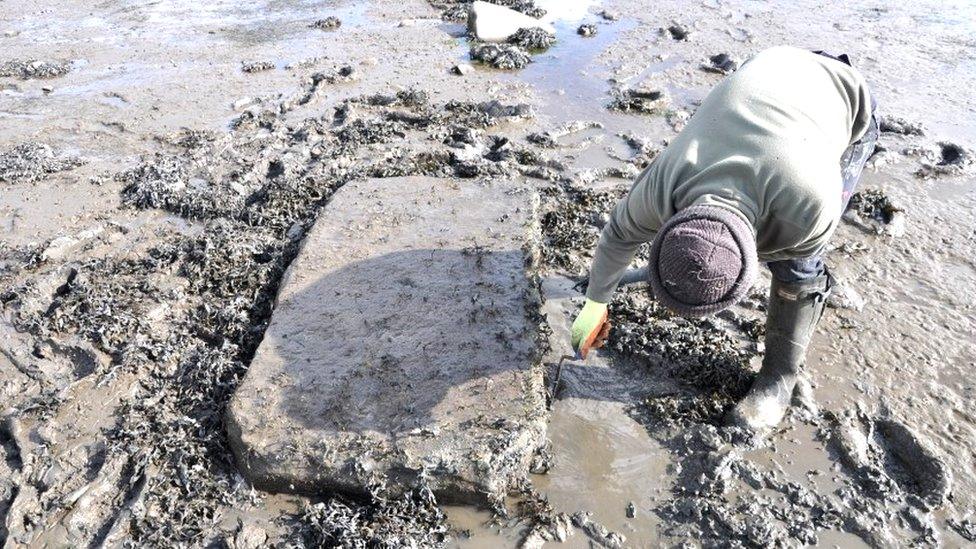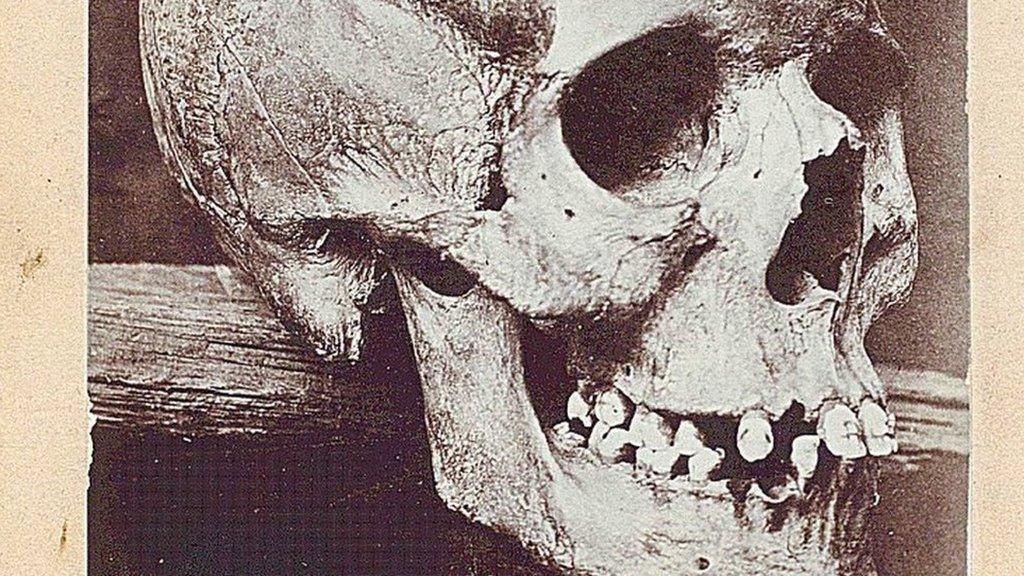Plans revealed for a national 'witches' memorial in Fife
- Published

Plans would see Beamer Rock navigation beacon rebuilt on the coast at The Ness in Torryburn
Plans have been unveiled for a national memorial to all those condemned as witches in Scotland during the 16th to 18th Centuries.
The proposal includes using the Beamer Rock beacon which was removed from the Firth of Forth in 2011 to make way for the Queensferry Crossing.
It would be rebuilt on the coast at The Ness in Torryburn in Fife.
This is the site where Lilias Adie was buried after being forced to confess she was a witch.

Scientists have reconstructed how Lilias Adie (L) would have looked by using her skull (R)
It would be an information point for the history behind the persecutions.
The public will be able to view the plans at Torryburn and Newmills Community Centre on 26 September.
Lilias Adie was a Torryburn woman who died of maltreatment in custody in 1704 as an accused witch.
Her grave, 100 metres into the intertidal zone on the foreshore at Torryburn, was opened by curio hunters, who then sold her skull in 1852.
Modern day archaeologists and historians found her grave, which has a huge slab on top, in 2014.

Lilias Adie's grave is 100 metres into the intertidal zone on the foreshore in the Forth at Torryburn
The call for a memorial to both Lilias and to all of Scotland's accused witches is now being supported by community councils and councillors from west Fife.
Councillors Kate Stewart, Mino Manekshaw and Bobby Clelland said in a joint statement: "We'd love to see the creation of a memorial at Torryburn, dedicated to the memory of Lillias Adie and more generally to the many thousands of (mainly women) persecuted as witches in early modern Scotland.
"It would help to re-positioning them away from the misguided modern 'Halloween-style' perception of fun they have become. They were the innocent victims of an unimaginable injustice.
"The council has a potentially ready-made piece of monumental architecture in the form of the 1840s Beamer navigation beacon which has it's own ties to Torryburn.
"It was designed by Stevenson, whose nanny for 20 years, Alison Cunningham, was born in Torryburn.
"We're keen to gauge public opinion on its possible re-positioning and use for such an iconic role."
Douglas Speirs, Fife Council's Archaeologist said "Fife, and specifically Torryburn, the site of Lilias' unique revenant grave, is a particularly good place for such a memorial given the sad fact that in Fife possibly more witches than any other county in Scotland were accused and executed."
Using records to quantify the exact scale of Scottish witch-hunting is problematic given the fragmentary nature of the surviving records but going by records alone there are approximately 3,300 records of accusations of witchcraft in Scotland between the 16th and 18th centuries with about 1,400 recorded executions. But the records are fragmentary, and the real numbers may be much higher.


A 17th Century woodcut showing three witches and their familiars
Witches
The surviving records show Haddingtonshire/East Lothian prosecuted 520 cases, Edinburgh 325 cases and Fife 280 cases.
However, Haddingtonshire has better historic record survival than Fife, and Edinburgh was unusually high because cases were referred to the capital from other areas.
It is possible that Fife accused and executed more witches than any other county in Scotland.
Many more innocent victims were accused and executed than are represented in the surviving records of Fife's 280 victims.

- Published28 October 2014
